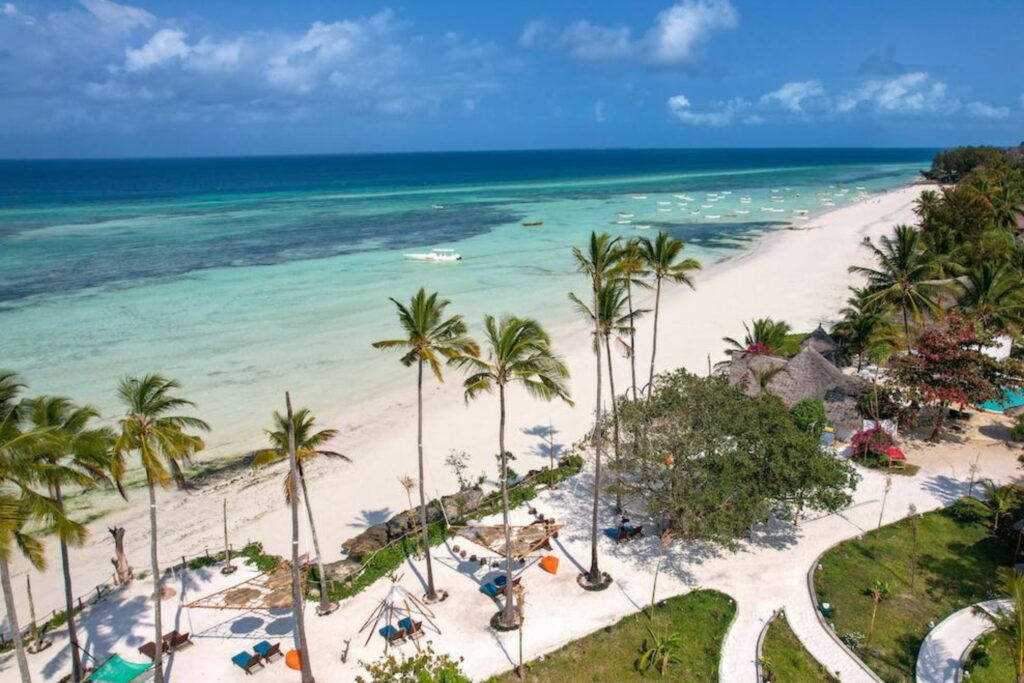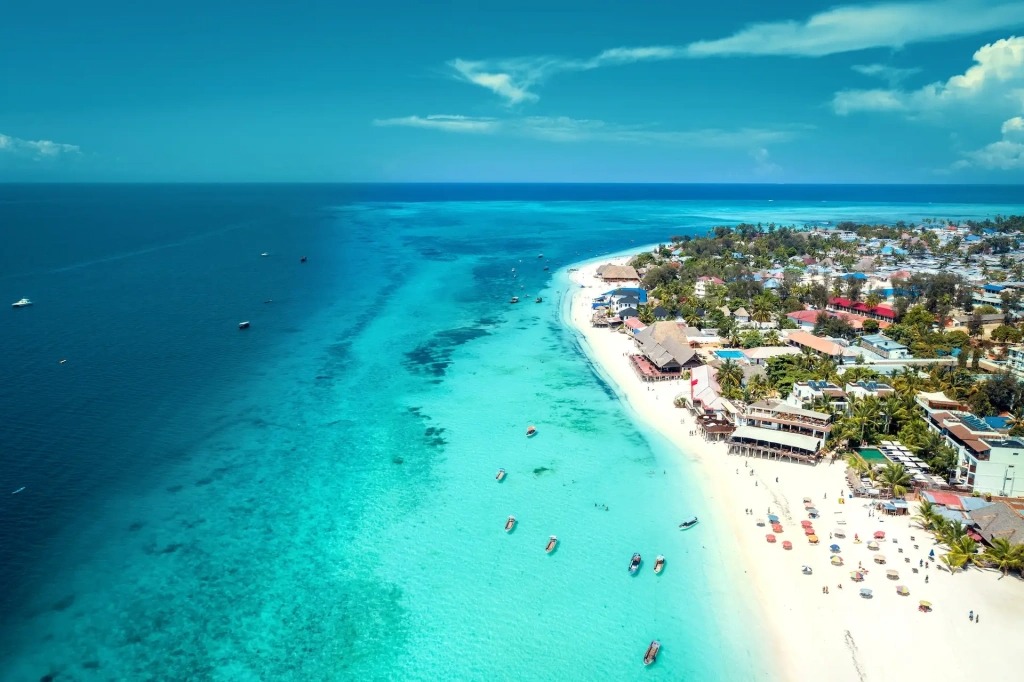Somewhere off the Tanzanian coast, where the Indian Ocean turns from turquoise to indigo, Zanzibar sits like a forgotten jewel. It’s a name that instantly sparks wanderlust—and for good reason.
This semi-autonomous island isn’t just a beach lover’s dream; it’s a storybook place where the sand feels like sifted flour, the sea is clear enough to read a book through, and centuries of culture live on in music, food, and architecture.
Let’s start with the obvious: the beaches. Nungwi and Kendwa in the north are probably the most talked about, and they earn every bit of their fame. The tides here don’t retreat as dramatically as in other parts of the island, which means you can swim at almost any hour.
The waters are calm, warm, and so clear that you can spot a passing starfish or sea urchin from the surface. Nungwi also has one of the best sunsets on the island. As the sun dips below the horizon, the sky turns sherbet-orange and boats—those traditional dhow sails—silhouette against the light like scenes from an old travel film.

Further east, beaches like Matemwe and Paje cater to different tastes. Matemwe is quiet, more laid-back, and perfect if you want to read, nap, or stare blankly at the horizon while pondering life. Paje, on the other hand, buzzes with energy.
It’s one of the best kite-surfing spots in Africa. The consistent winds and wide sandy shore attract thrill-seekers from all over the world. But even if you’re not the adrenaline type, Paje has a great mix of beach cafés, music, and good conversation.
Then there’s the underwater world. Zanzibar is famous for its coral reefs, and there are plenty of dive centers ready to take you out. Mnemba Atoll is the star of the show. It’s a private island, but the surrounding marine reserve is open for snorkeling and diving. Expect to see vibrant coral gardens, schools of colorful fish, and if you’re lucky, dolphins or sea turtles gliding past like they own the place—which, to be fair, they kind of do.
But Zanzibar isn’t just about the sea and sand. It’s a living, breathing archive of cultures. Stone Town, the old city and cultural heart of Zanzibar, tells the story of Arab traders, African kings, Persian influences, and Portuguese ambitions—all layered into narrow alleyways and intricately carved wooden doors. The call to prayer echoes over the rooftops, blending with laughter from a local café or the distant strum of a taarab band. It’s a place where history and daily life walk hand in hand.

No visit is complete without tasting the spice of Zanzibar—literally. The island has long been called the “Spice Island” thanks to its clove, cinnamon, nutmeg, and vanilla farms. You can tour these plantations, where guides pluck leaves and fruits from trees and hand them to you, letting you sniff, taste, and guess what’s what. It’s a surprisingly sensory and memorable experience—and a great way to understand how deeply spices are woven into local culture and cuisine.
And if you’re around during a full moon, keep an ear out for beach parties. They’re a mix of live music, DJ sets, grilled seafood, and barefoot dancing. It’s a celebration of the island spirit—a reminder that while the beaches are beautiful, it’s the energy of the place that truly makes Zanzibar unforgettable.


Some genuinely nice stuff on this internet site, I like it.